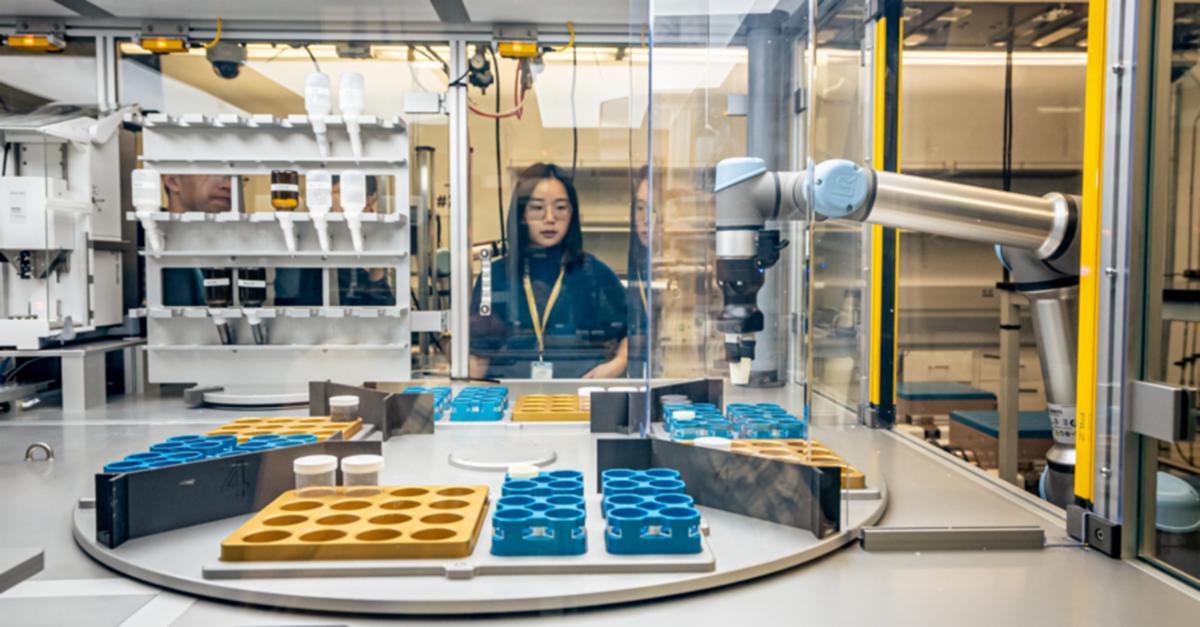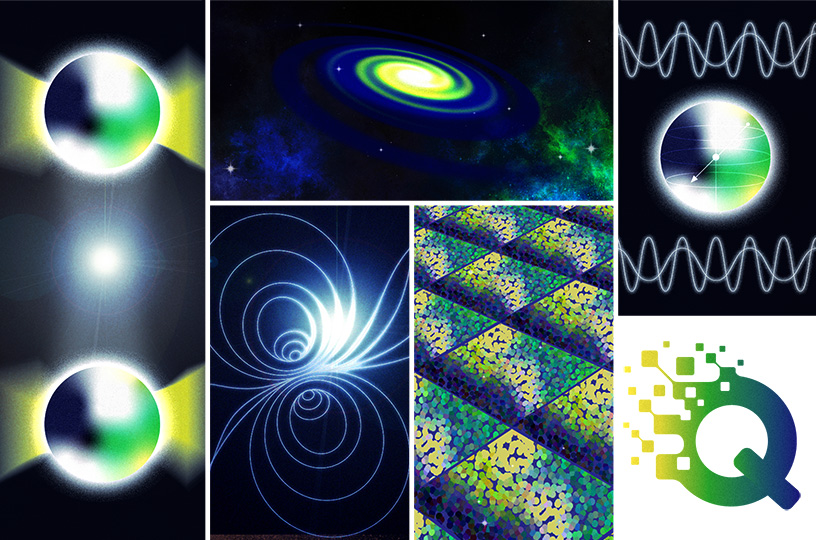Topics pertaining to technology, especially as they pertain to business issues are discussed. Such topics include using tech to boost productivity, marketing with social media, cybersecurity, and numerous other topics.
Search This Blog
Thursday, December 21, 2023
Tuesday, July 25, 2023
Monday, May 1, 2023
Sunday, April 30, 2023
Thursday, April 27, 2023
Wednesday, April 26, 2023
Tuesday, April 25, 2023
Saturday, April 22, 2023
Friday, April 21, 2023
Thursday, April 20, 2023
Wednesday, April 19, 2023
Tuesday, April 18, 2023
Monday, April 17, 2023
Meet the Autonomous Lab of the Future
Berkeley Lab News Release:
|
|
|
|
|
|
Sunday, April 16, 2023
Saturday, April 15, 2023
Friday, April 14, 2023
Thursday, April 13, 2023
Wednesday, April 12, 2023
Tuesday, April 11, 2023
Monday, April 10, 2023
Five Ways QSA is Advancing Quantum Computing
Berkeley Lab News Release:
|
|
|
|
|
Sunday, April 9, 2023
Saturday, April 8, 2023
Friday, April 7, 2023
Thursday, April 6, 2023
Wednesday, April 5, 2023
Tuesday, April 4, 2023
Tuesday, March 28, 2023
Monday, March 27, 2023
Saturday, March 25, 2023
Friday, March 24, 2023
Thursday, March 23, 2023
Wednesday, March 22, 2023
Tuesday, March 21, 2023
Saturday, March 18, 2023
Friday, March 17, 2023
Thursday, March 16, 2023
Wednesday, March 15, 2023
Tuesday, March 14, 2023
Saturday, March 11, 2023
Friday, March 10, 2023
Thursday, March 9, 2023
Wednesday, March 8, 2023
Tuesday, March 7, 2023
Monday, March 6, 2023
Sunday, March 5, 2023
Saturday, March 4, 2023
Friday, March 3, 2023
Thursday, March 2, 2023
Wednesday, March 1, 2023
Tuesday, February 28, 2023
Monday, February 27, 2023
Saturday, February 25, 2023
Friday, February 24, 2023
Thursday, February 23, 2023
Wednesday, February 22, 2023
Tuesday, February 21, 2023
Cybersecurity Defenders Are Expanding Their AI Toolbox
Pacific Northwest National Laboratory News Release:
Deep reinforcement learning shows promise to stop adversaries, defend networks |
February 16, 2023 |
RICHLAND, Wash.—Scientists have taken a key step toward harnessing a form of artificial intelligence known as deep reinforcement learning, or DRL, to protect computer networks.
When faced with sophisticated cyberattacks in a rigorous simulation setting, deep reinforcement learning was effective at stopping adversaries from reaching their goals up to 95 percent of the time. The outcome offers promise for a role for autonomous AI in proactive cyber defense.
Scientists from the Department of Energy’s Pacific Northwest National Laboratory documented their findings in a research paper and presented their work Feb. 14 at a workshop on AI for Cybersecurity during the annual meeting of the Association for the Advancement of Artificial Intelligence in Washington, D.C.
The starting point was the development of a simulation environment to test multistage attack scenarios involving distinct types of adversaries. Creation of such a dynamic attack-defense simulation environment for experimentation itself is a win. The environment offers researchers a way to compare the effectiveness of different AI-based defensive methods under controlled test settings.
Such tools are essential for evaluating the performance of deep reinforcement learning algorithms. The method is emerging as a powerful decision-support tool for cybersecurity experts—a defense agent with the ability to learn, adapt to quickly changing circumstances, and make decisions autonomously. While other forms of artificial intelligence are standard to detect intrusions or filter spam messages, deep reinforcement learning expands defenders’ abilities to orchestrate sequential decision-making plans in their daily face-off with adversaries.
Deep reinforcement learning offers smarter cybersecurity, the ability to detect changes in the cyber landscape earlier, and the opportunity to take preemptive steps to scuttle a cyberattack.
DRL: Decisions in a broad attack space“An effective AI agent for cybersecurity needs to sense, perceive, act and adapt, based on the information it can gather and on the results of decisions that it enacts,” said Samrat Chatterjee, a data scientist who presented the team’s work. “Deep reinforcement learning holds great potential in this space, where the number of system states and action choices can be large.”
DRL, which combines reinforcement learning and deep learning, is especially adept in situations where a series of decisions in a complex environment need to be made. Good decisions leading to desirable results are reinforced with a positive reward (expressed as a numeric value); bad choices leading to undesirable outcomes are discouraged via a negative cost.
It’s similar to how people learn many tasks. A child who does their chores might receive positive reinforcement with a desired playdate; a child who doesn’t do their work gets negative reinforcement, like the takeaway of a digital device.
“It’s the same concept in reinforcement learning,” Chatterjee said. “The agent can choose from a set of actions. With each action comes feedback, good or bad, that becomes part of its memory. There’s an interplay between exploring new opportunities and exploiting past experiences. The goal is to create an agent that learns to make good decisions.”
Open AI Gym and MITRE ATT&CKThe team used an open-source software toolkit known as Open AI Gym as a basis to create a custom and controlled simulation environment to evaluate the strengths and weaknesses of four deep reinforcement learning algorithms.
The team used the MITRE ATT&CK framework, developed by MITRE Corp., and incorporated seven tactics and 15 techniques deployed by three distinct adversaries. Defenders were equipped with 23 mitigation actions to try to halt or prevent the progression of an attack.
Stages of the attack included tactics of reconnaissance, execution, persistence, defense evasion, command and control, collection and exfiltration (when data is transferred out of the system). An attack was recorded as a win for the adversary if they successfully reached the final exfiltration stage.
“Our algorithms operate in a competitive environment—a contest with an adversary intent on breaching the system,” said Chatterjee. “It’s a multistage attack, where the adversary can pursue multiple attack paths that can change over time as they try to go from reconnaissance to exploitation. Our challenge is to show how defenses based on deep reinforcement learning can stop such an attack.” |
 |
Like a toddler starting to walk learns from bumps and bruises, algorithms based on deep reinforcement learning, or DRL, are trained through rewards for good decisions and penalties for bad decisions. (Photo by Daxiao Productions | Shutterstock.com) |
DQN outpaces other approachesThe team trained defensive agents based on four deep reinforcement learning algorithms: DQN (Deep Q-Network) and three variations of what’s known as the actor-critic approach. The agents were trained with simulated data about cyberattacks, then tested against attacks that they had not observed in training.
DQN performed the best.
“Our goal is to create an autonomous defense agent that can learn the most likely next step of an adversary, plan for it, and then respond in the best way to protect the system,” Chatterjee said.
Despite the progress, no one is ready to entrust cyber defense entirely up to an AI system. Instead, a DRL-based cybersecurity system would need to work in concert with humans, said coauthor Arnab Bhattacharya, formerly of PNNL.
“AI can be good at defending against a specific strategy but isn’t as good at understanding all the approaches an adversary might take,” Bhattacharya said. “We are nowhere near the stage where AI can replace human cyber analysts. Human feedback and guidance are important.”
In addition to Chatterjee and Bhattacharya, authors of the AAAI workshop paper include Mahantesh Halappanavar of PNNL and Ashutosh Dutta, a former PNNL scientist. The work was funded by DOE’s Office of Science. Some of the early work that spurred this specific research was funded by PNNL’s Mathematics for Artificial Reasoning in Science initiative through the Laboratory Directed Research and Development program. |


